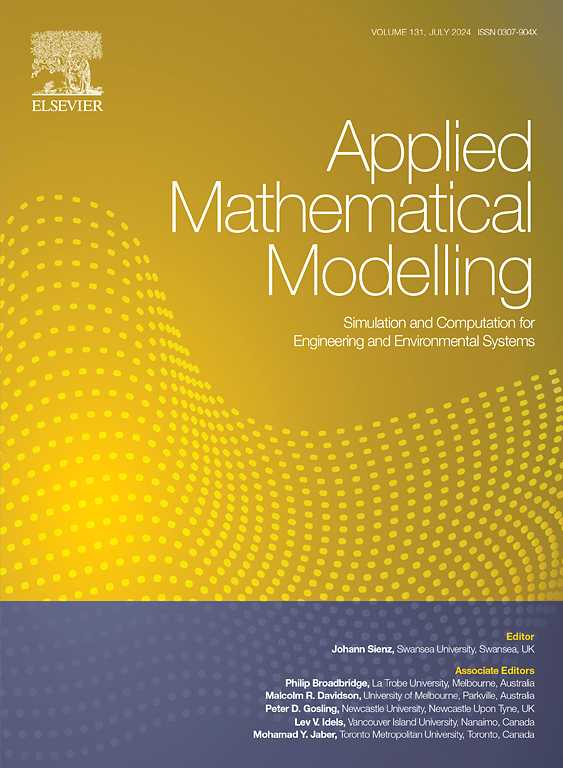A theoretical model for a low-frequency two-stage hybrid vibration isolator with a nonlinear energy sink and a negative stiffness spring
IF 4.4
2区 工程技术
Q1 ENGINEERING, MULTIDISCIPLINARY
引用次数: 0
Abstract
This paper proposes a new design philosophy of integrating a nonlinear energy sink (NES) with a negative stiffness spring (NSS) to construct a two-stage hybrid vibration isolator for low-frequency vibration attenuation. A theoretical model of the proposed two-stage hybrid vibration isolator is established to investigate the vibration isolation performance. The effect of a linear vibration absorber (LVA), the NES, and the NSS on the force transmissibility of the structure is compared, in which the parametric study including negative stiffness coefficient, mass ratio, frequency ratio, and barrier height is conducted. The nonlinear dynamic characteristics and energy transfer efficiency of the vibration isolation system are analyzed based on motion phase trajectories, Poincaré mapping and chaotic bifurcation analysis. The results demonstrate that the two-stage isolator with the NES and NSS architecture exhibits superior broadband vibration isolation compared to its counterpart with the LVA and NSS. The structure with the LVA and NSS shows a wider forbidden band range than the device without the LVA. Besides, the negative stiffness configuration between the vibration source and the protected base is a critical factor to influence vibration isolation. A larger negative stiffness coefficient results in lower force transmissibility and the onset frequency of the forbidden zone but the broader bandwidth of the forbidden zone. This work paves a new theoretical venue for low-frequency hybrid vibration isolators in precision instrument fields.
求助全文
约1分钟内获得全文
求助全文
来源期刊

Applied Mathematical Modelling
数学-工程:综合
CiteScore
9.80
自引率
8.00%
发文量
508
审稿时长
43 days
期刊介绍:
Applied Mathematical Modelling focuses on research related to the mathematical modelling of engineering and environmental processes, manufacturing, and industrial systems. A significant emerging area of research activity involves multiphysics processes, and contributions in this area are particularly encouraged.
This influential publication covers a wide spectrum of subjects including heat transfer, fluid mechanics, CFD, and transport phenomena; solid mechanics and mechanics of metals; electromagnets and MHD; reliability modelling and system optimization; finite volume, finite element, and boundary element procedures; modelling of inventory, industrial, manufacturing and logistics systems for viable decision making; civil engineering systems and structures; mineral and energy resources; relevant software engineering issues associated with CAD and CAE; and materials and metallurgical engineering.
Applied Mathematical Modelling is primarily interested in papers developing increased insights into real-world problems through novel mathematical modelling, novel applications or a combination of these. Papers employing existing numerical techniques must demonstrate sufficient novelty in the solution of practical problems. Papers on fuzzy logic in decision-making or purely financial mathematics are normally not considered. Research on fractional differential equations, bifurcation, and numerical methods needs to include practical examples. Population dynamics must solve realistic scenarios. Papers in the area of logistics and business modelling should demonstrate meaningful managerial insight. Submissions with no real-world application will not be considered.
 求助内容:
求助内容: 应助结果提醒方式:
应助结果提醒方式:


